Chemical Sciences and Technologies for Cultural Heritage

The laboratory is active at a national and international level in the study of the materials of art (traditional, modern and contemporary), archaeology and architecture, in the evaluation of natural and anthropic impacts on artefacts - with particular reference to coastal environments - and in the implementation of methodologies for conservation and degradation prevention. Special attention is devoted to the theme of conservation sustainability, as expressed through the proposal of materials and methodologies with reduced impact on the environment and the health of the operators.
As a point of reference for public and private institutions in the area, the group collaborates, among others, with Fondazione Musei Civici, the Superintendency, the Municipality of Venice and various companies in the area to develop specific methodologies for the study and protection of cultural heritage.
- Eleonora Balliana
- Laura Falchi
- Francesca Caterina Izzo
- Margherita Zucchelli
- Elisabetta Zendri (Coordinator)
Collaborators
- Marco Destefani (NOP PhD Student)
- Margherita Gnemmi (National PhD Student on Heritage Science)
- Aurora Cairoli (National PhD Student on Heritage Science)
- Laura Pagnin (Research Associate)
- Gillian Paige Boyce (US-Italy Fulbright, PhD student)
Contacts:
elizen@unive.it
Tel.: +39 041 234 6730
Lines of research
The research group works in the field of cultural heritage, studying materials and their behaviour in relation to environmental conditions and developing new technologies for the conservation of architectural, artistic and archaeological heritage.
Ours is an integrated approach, in which compatibility and sustainability play an essential role.
- Study of mobile works
- Non-invasive and micro-invasive diagnostics (paintings, historical textiles, paper and wood materials)
- Identification of constituent materials and their behaviour in relation to specific environmental parameters
- Study of modern and contemporary heritage
- Archaeometric studies
- Characterisation of archaeological materials (ceramic, metal, glass, bone, etc.)
- Production technologies, deterioration processes, provenance
- Evaluation of products and methods with reduced environmental impact for the conservation of archaeological finds
- Study of architectural heritage
- Non-invasive and micro-invasive diagnostics and monitoring of natural and artificial stone materials
- Evaluation of the effectiveness of methodologies, materials and techniques for intervening on the built environment
- Climate change and architectural heritage
- Research in the field of street & urban art, wall paintings
- Technologies for conservation and restoration
- Technologies for eco-friendly interventions
- Monitoring and preventive maintenance projects
- Formulation and optimisation of products and technologies for the conservation of movable and immovable assets
- Education and dissemination of science for cultural heritage
- Educational and dissemination workshops with private and public institutions
- Technical and scientific seminars with experts in the field
- Interactive paths to discover the connections between history, art and science
Collaborations and agreements
Collaborations:
- Collaboration with the Ca' Pesaro International Gallery of Modern Art
- Collaboration with Universitat Politècnica de València, Spain
- Collaboration with Ateneo Veneto
- Collaboration with Stanford University
- Collaboration with National Technical University Of Athens
- Collaboration with University of Èvora
- Collaboration with Padua's CNR-ICMATE and Bologna's CNR-ISAC
Agreements:
- Research agreement with Superintendency of Archaeology, Fine Arts and Landscape for the Municipality of Venice and the Lagoon
- Research agreement with Fondazione Musei Civici di Venezia
- Research, scientific communication and teaching agreement with Fondazione Centro per la conservazione ed il restauro dei beni culturali “La Venaria Reale”
- Agreement with Sincrotrone ELETTRA di Trieste
- Research agreement with Italian Institute of Technology IIT
- Research agreement with CESMAR7
Case studies
Contemporary art and design materials
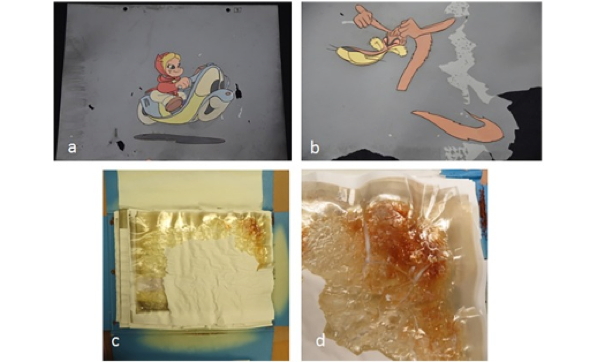
The study of polymaterial works: the case of the cels of the Carosello shorts
The first scientific study on the cels produced between the 1950s and 1970s for Italian television was conducted in cooperation with the Musil, the Museum of Industry and Labour in Brescia. The cels were transparent sheets on which individual frames were drawn. The main objective was to investigate their composition, to identify the materials used to paint the characters and to assess their state of preservation. The results, which were obtained by means of a non-invasive multi-analytical and microdestructive approach, show that the plastic support consists of nitrocellulose or cellulose acetate, while the pictorial layers - which contain a variety of pigments and dyes - were applied with a mixture of vegetable gum and animal glue or with synthetic resins.
Web references: The Science of Carousels: Ca' Foscari Analyses Gamma Film's Cels, The Science of Carousels
- Izzo, Francesca Caterina; Van Keulen, Henk; Carrieri, Alessandra Assessing the Condition of Complex Poly-Material Artworks by Py-GC-MS: The Study of Cellulose Acetate-Based Animation Cels in SEPARATIONS, vol. 9, pages 131, 2022
- Francesca Caterina IZZO, Alessandra Carrieri, Giovanni Bartolozzi, Henk van Keulen, Irene Lorenzon, Eleonora Balliana, Costanza Cucci, Francesco Grazzi, MarcelloPicollo Elucidating the composition and the state of conservation of nitrocellulose-based animation cells by means of non-invasive and micro-destructive techniques in JOURNAL OF CULTURAL HERITAGE, vol. 35, pages 254-262, 2022
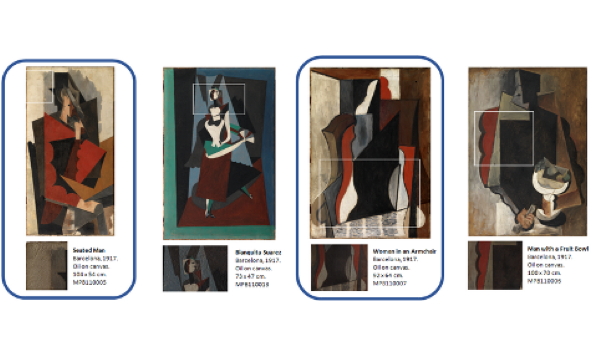
Picasso 1917: 4 pictorial works by Pablo Picasso from the Picasso Museum in Barcelona
Analyses revealed that Picasso painted with oil colours containing both traditional linseed oil and less siccative oils such as safflower and sunflower oil. The canvases used by the artist were made of cotton, on which Picasso applied two different layers of preparation: one made with animal glue, the other with siccative oil. Both were mixed with different pigments (white lead, baryte, zinc oxide, etc.). The results obtained were combined with visual examination of the cracks and mechanical problems of the paintings to establish hypotheses on the differences in degradation. This is one of the first times that an approach based on non-invasive documentation techniques, chemical-physical analysis and observations of mechanical damage has been adopted to provide insight into the possible contribution each layer has on the observed degradation.
Web references: The mystery of the deteriorated Picasso unveiled by a team of scientists
- L. Fuster-López, F. C. Izzo, C. K. Andersen, A. Murray, A. Vila, M. Picollo, L. Stefani, R. Jiménez & E. Aguado-Guardiola Picasso’s 1917 paint materials and their influence on the condition of four paintings in SN APPLIED SCIENCES, vol. 2, 2020
- A. Vila, A. Murray, C. K. Andersen, F. C. Izzo, L. Fuster-López, E. Aguado-Guardiola, R. Jiménez-Garnica, A. Scharff Picasso 1917: An Insight into the Effects of Ground and Canvas in the Failure Mechanisms in Four Artworks , Conservation of Modern Oil Paintings, Springer, Cham, pages 245-253, 2020
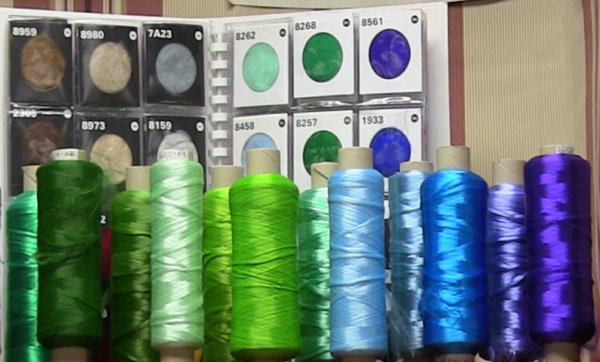
Textile Art and Ariadne's Thread: Study of synthetic fibres in contemporary art and design
Born out of the collaboration with the BAS Scientific Area Library of Ca' Foscari, which is the repository of the Montefibre fund, the project is aimed at studying and enhancing the fund, which gathers original yarns and documentary archives of the products of the Italian chemical company Montedison Fibre. The materials, in particular polyamide (Nylon) and polyester (PET) matrix technofibre yarns, were characterised and monitored by verifying their stability to natural and artificial light, hygrometric and thermal ageing processes. The results of the research are also functional to the study of the diffusion and impact of synthetic fibres in art and design.
Web references: An 'Ariadne's Thread' links historical techno-fibres, library, research and students
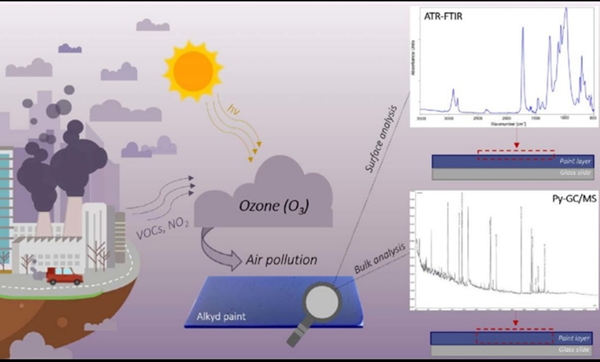
The effect of ozone on modern painting materials
The atmospheric degradation reactions affecting the stability of modern materials are still relevant today. For this reason, a study was carried out in cooperation with the Academy of Fine Arts in Vienna, focusing on the analytical (FTIR and Py-GC/MS) and statistical evaluation of the degradation processes of acrylic, alkyd and styrene-acrylic paints after accelerated exposure to ozone (O3) and relative humidity (RH). From the combination of these results, specific information useful for the prevention and conservation of modern paint films was obtained.
- Pagnin, L.; Zendri, E.; Izzo, F.C. How Can Ozone and Relative Humidity Affect Artists’ Alkyd Paints? A FT-IR and Py-GC/MS Systematic Study. Polymers 2022, 14,1831.
- Pagnin, L.; Calvini, R.; Sterflinger, K.; Izzo, F.C. Data Fusion Approach to Simultaneously Evaluate the Degradation Process Caused by Ozone and Humidity on Modern Paint Materials. Polymers2022, 14, 1787.
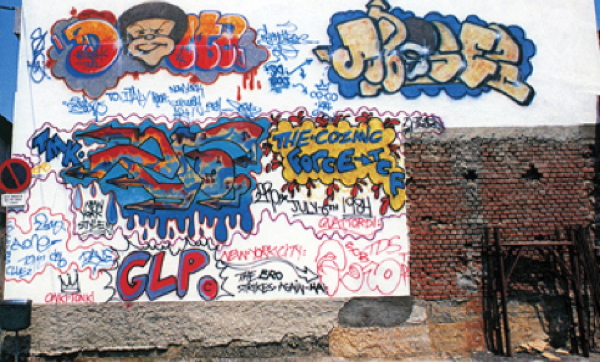
Study and evaluation of protective systems for street art and writing works
Experiments are underway to evaluate the use of commercial products for the protection of street and urban art and writing works.
A case in point is the writing work realised in 1984 by four artists (Delta 2, Ero, Phase 2 and Rammellzee) invited to Quattordio (Al), of which only a small portion remains visible today.
Alessandra Carrieri, Elena Astolfi, Francesca Caterina Izzo, Austin Nevin Restaurare opere di writing? Restauro di un graffito del 1984 , Supporto e(’) Immagine - Problematiche di consolidamento e di conservazione dei supporti nei dipinti contemporanei, Padua, Il Prato, pages 217-223, (ISBN 9788863365207)
Studies of mobile works
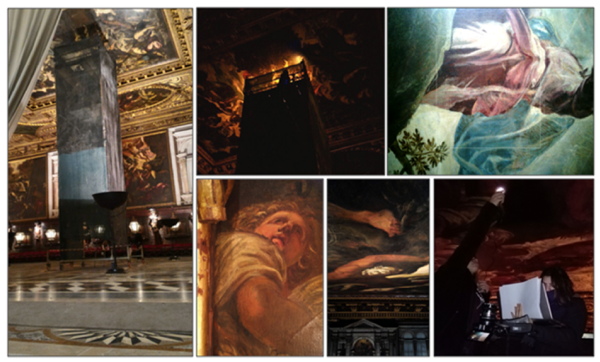
Jacopo Tintoretto's canvases in the Chapter Room of the Scuola Grande di San Rocco in Venice
On the occasion of the 500th anniversary of the birth of Jacopo Robusti, known as Tintoretto (1519-1594), our research group is conducting a diagnostic and monitoring study of the state of conservation of the canvases and wooden ceiling in the Chapter Room of the Scuola Grande di San Rocco. Using mainly non-invasive methodologies, the project focuses on the study of the painting techniques used by Tintoretto and the assessment of the state of conservation of the materials, both original and restored; the development of a monitoring system to control the works in relation to environmental conditions. The study is an important insight into Tintoretto's painting technique and the first technical-scientific study on the ceiling of the Chapter Room.
Web references: Maintenance Manual for the Tintoretto of San Rocco
The analytical diagnostic project is being carried out in collaboration with the Superintendency for Archaeology, Cultural Heritage and Landscape for the Municipality of Venice and the Lagoon, the Confraternity of the Scuola Grande di San Rocco, Fondazione Ca' Foscari and Venice in Peril. The project benefits from funding by the Scuola Grande di San Rocco and from the important support and interest of Venice in Peril.
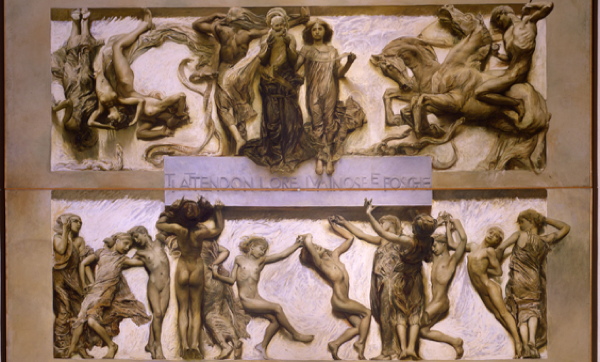
The pictorial cycle "The Poem of Human Life" by Aristide Sartorio
A study of the state of preservation and painting techniques of the paintings of the cycle "The Poem of Human Life" by Aristide Sartorio (1906-1907), in collaboration with the International Gallery of Modern Art of Ca' Pesaro. The large decorative panels of the cycle are painted using a very particular technique that can be considered as a modern encaustic painting based on a mixture of oils, waxes and turpentine, mixed with traditional and industrially produced pigments.
Website: Conservation science in cultural heritage
Francesca Caterina Izzo; Elisabetta Zendri; Matteo Piccolo; Henk van Keulen; Eleonora Balliana; Laura Falchi; Silvio Fuso The Materials And The Painting Techniques By Giulio Aristide Sartorio In The Pictorial Cycle "The Poem Of Human Life" (1906-07): Knowledge And Prevention For A Musealisation Project in CONSERVATION SCIENCE IN CULTURAL HERITAGE, vol. 13, pages 379-393 (ISSN 1973-9494)
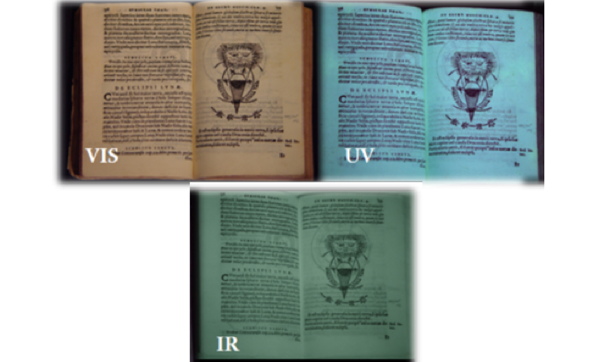
Characterisation and cognitive monitoring of 15th-17th century printed books from Ateneo Veneto
Ateneo Veneto houses a wealth of books pertaining to the technical-scientific field (e.g., astronomy, mathematics, anatomy), which is unique in Venice in terms of the number and variety of book material. Printed books constitute an underestimated field full of open questions concerning the transition from manual and small-scale production to mass production. The study is aimed at gaining knowledge of production technologies in the Italian and European contexts, of the materials used (inks, paper, additives, glues), and at assessing their state of conservation and their relationship with the conservation environment.
Albertin, F.; Balliana, E.; Pizzol, G.; Colavizza, G.; Zendri, E.; Raines, D. (2017), Printing materials and technologies in the 15 th − 17 th century book production: an undervalued research field in MICROCHEMICAL JOURNAL, vol. 138, pages 147-153 (ISSN 0026-265X)
Archaeological and archaeometric studies
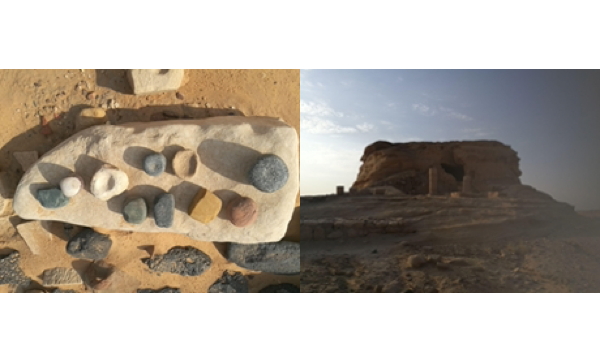
Investigations on the archaeological site of Hegra (Saudi Arabia)
Hegra is located in the western Saudi region of Hejaz and was built by the Nabataeans, rich desert merchants and became the second most important and splendor city after Petra. Since 2008 it has been on the list of UNESCO World Heritage Sites.
The archaeological structures are characterized by the widespread use of raw earth, easily subject to degradation. The project concerns the study of the state of conservation of five areas within the Hegra site and the proposal of conservation methodologies suited to the materials and specific environmental conditions.
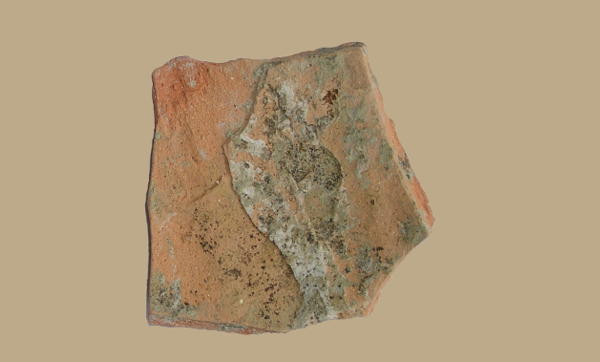
Archaeometric studies of historical ceramic materials from the German area and Torcello
The aim of the research is to define a scientific methodology to correlate production techniques with the chemical and physical characteristics of traditional ceramic materials.
The multi-analytical approach uses traditional archaeometric research techniques combined with innovative methods such as Laser Induced Fluorescence (LIF), Laser Induced Breakdown Spectroscopy (LIBS) and X-ray Computed Microtomography (μ-CT).
Ricci, Giulia; Caneve, Luisa; Pedron, D.; Holesch, Nadine; Zendri, Elisabetta A multi-spectroscopic study for the characterization and definition of production techniques of German ceramic sherds in MICROCHEMICAL JOURNAL, vol. 126, pages 104-112 (ISSN 0026-265X)
Study of architectural heritage
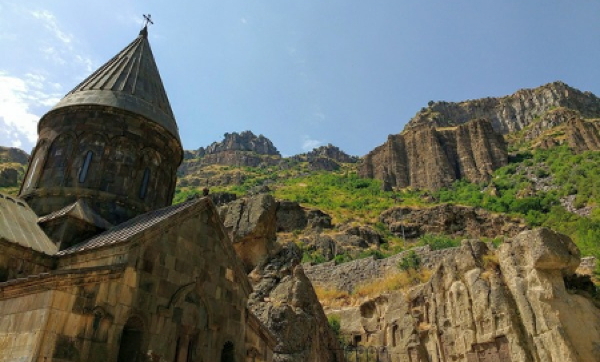
Preventive conservation in Armenia: preliminary study on the state of conservation of the internal surfaces in the Geghard Monastery, a UNESCO heritage site
The study, developed in collaboration between the Science and Technologies for the Conservation of Cultural Heritage research group and the National University of Architecture and Construction of Armenia (NUACA) of Yerevan, concerned the assessment of the state of conservation of the Geghard monastery, UNESCO heritage. In particular, this research reports the results of the multidisciplinary investigation on the internal surfaces of the cavity of the "Proshian family hall", belonging to the 13th century. The data collected constitute an essential starting point for the planning and implementation of future conservative interventions.
Veneziano, Matilde; Harutyunyan, Emma; Kalantaryan, Nanar; Driussi, Guido; Morabito, Zeno; Zendri, Elisabetta Preventive Conservation of Cultural Heritage in Armenia: A Preliminary Study of the Internal Surfaces in the Geghard Monastery

Study of the phenomenon of capillary rise in Venetian masonry
Rising water and saline solutions cause serious damage to masonry subjected to it, with increased humidity, living discomfort, the presence of biological growth, and the deposition and transport of soluble salts that cause efflorescence, sub-efflorescence, detachment, and pulverisation. The phenomenon has been studied by our group on numerous Venetian masonries (including the most recent at Ca' Foscari, Ca' Bottacin, Palazzo Badoer, and Palazzo Malipiero), assessing the extent of the phenomenon at urban level, the severity of the phenomenon in specific historical masonries, and the dynamics of the processes in laboratory studies using masonry built and maintained in a controlled environment and in the field. The group has produced considerable new research in this area over the last 30 years.
- Cimino, Dafne; Falchi, Laura; Corradini, Martina; Lucero Gomez, Paola; Balliana, Eleonora; Zendri, Elisabetta, 2022, Reflectance Spectroscopy as a Non-invasive Technique for Preliminary Characterization of Soluble Salts on Historical Masonries in Osman, A., Moropoulou, A., Advanced Nondestructive and Structural Techniques for Diagnosis, Redesign and Health Monitoring for the Preservation of Cultural Heritage, Springer, vol. 16, pages 28-37 (ISBN 978-3-031-03794-8; 978-3-031-03795-5) DOI - ARCA sheet: 10278/3760229
- M. Corradini, L. Falchi, P. Lucero-Gomez, E. Zendri, 2021 Recent evolution of the rising damp phenomenon in Venetian masonries by visual-based approach , Gli effetti dell'acqua sui beni culturali in SCIENZA E BENI CULTURALI, Venice, Arcadia ricerche publishing house, pages 11-20, Conference: Science and Cultural Heritage (ISBN 978-88-95409-24-5) (ISSN 2039-9790) - ARCA sheet: 10278/3733368
- Laura, Falchi; Debora, Slanzi; Eleonora, Balliana; Guido, Driussi; Elisabetta, Zendri, 2018, Rising damp in historical buildings: A Venetian perspective in BUILDING AND ENVIRONMENT, vol. 131, pages 117-127 (ISSN 0360-1323) DOI - ARCA sheet: 10278/3695853
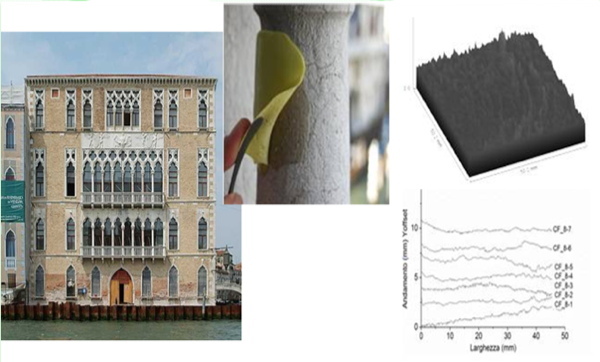
Study of the atmospheric impact on Istrian stone surfaces in a Venetian environment
Evaluation of surface vulnerability by means of chemical and physical analysis of products and study of degradation phenomenology in the Venetian buildings Ca' Foscari, Ca' Dolfin, Ca' Bembo, Ca' Bottacin. Study of surface morphology by digitising silicone casts. Degradation processes are related to environmental factors such as rainfall, temperature, humidity, pollutants, particulates.
- Gnemmi, Margherita; Falchi, Laura; Zendri, Elisabetta Non-Invasive-Monitoring Methodology for the Evaluation of Environmental Impacts on Istrian Stone Surfaces in Venice in ATMOSPHERE, vol. 13, pages 1036 (ISSN 2073-4433), DOI - ARCA sheet: 10278/3762151
- Falchi, Laura; Orio, Elisa; Balliana, Eleonora; Izzo, Francesca Caterina; Zendri, Elisabetta Investigation on the relationship between the environment and istria stone surfaces in Venice in ATMOSPHERIC ENVIRONMENT, vol. 210, pages 76-85 (ISSN 1352-2310)DOI - ARCA sheet: 10278/3713950
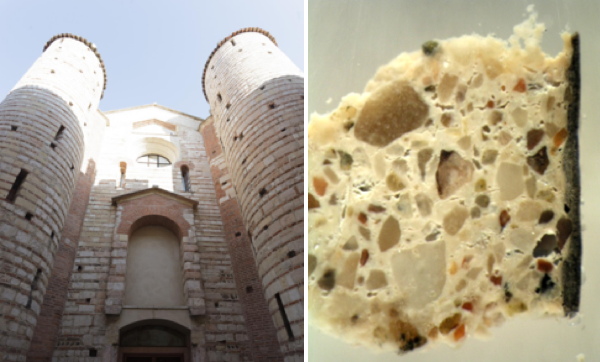
Study of mortars in the Church of San Lorenzo in Verona
Analysis and characterisation of mortar joints from the Church of San Lorenzo in Verona, using FT-IR spectroscopy, XRD analysis, SEM-EDX optical and electron microscopy, and TG-DSC thermogravimetric analysis. The results highlighted the presence of air lime and weakly hydraulic mortars produced with materials from the Verona area, characterised by limestone with clay impurities and, in some cases, magnesium. The characterisation of the joints allows for the identification of different mixtures linked to different construction phases of the church.
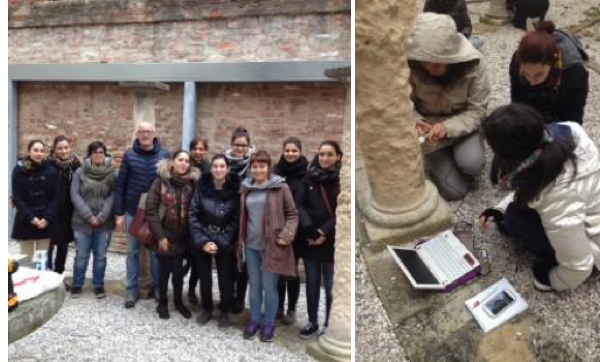
Conservation status of the columns in the courtyard of Ca' Bottacin, 2015-2016
In collaboration with the Technical Office of the University (Arch. Peltrera) and the Master's degree course Chemical Science for Conservation and Restoration (SCCR), a diagnostic project was developed for the future restoration of the five Vicenza stone columns preserved in an internal courtyard of Ca' Bottacin. Within the framework of the Techniques and Materials for Restoration course (Prof. Elisabetta Zendri), the students of the SCCR degree course contributed to the diagnostic investigations and chemical and physical analysis of samples taken from the artefacts by means of photographic campaign, digital, optical and electron microscopy, FT-IR spectroscopy, and TG-DSC thermal analysis.
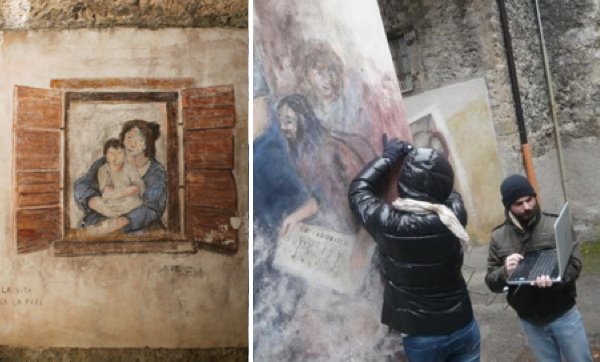
The murals in Cibiana di Cadore
In collaboration with the Municipality of Cibiana di Cadore and the DAIS and DSMN departments, the students of the Master's degree course in Chemical Science for Conservation and Restoration (SCCR) studied the murals of Cibiana di Cadore (BL), describing the materials, execution techniques and state of conservation. For the works studied, conservation and monitoring projects were proposed.
Web references: Ca' Foscari lecture among the murals of Cibiana
Study and development of innovative products
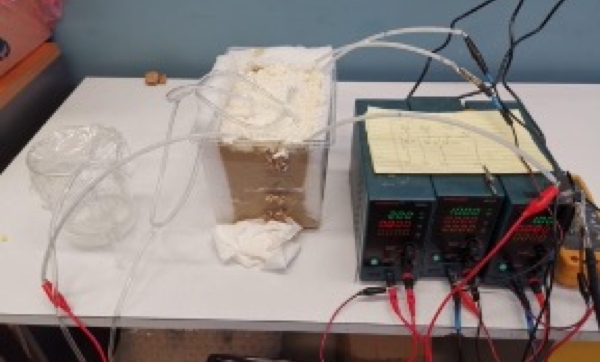
Innovative methods for desalinating porous materials
The aim of the project is to develop an electrokinetic method for the desalination of porous materials as an alternative to the more common pack applications. The electrokinetic method combines the movement of fluid (electroosmosis) and ions (electro-migration) under the effect of an applied electric field, which improves the transport of ionic species of salts and their removal rate from the object. The system developed employs four electrodes, which are positioned in pairs on two sides of the sample and embedded in layers of clay and cellulose wrap, through which the current is guided by applied electric fields. The excellent effectiveness was evaluated by comparison with a configuration simulating a traditional wrap.
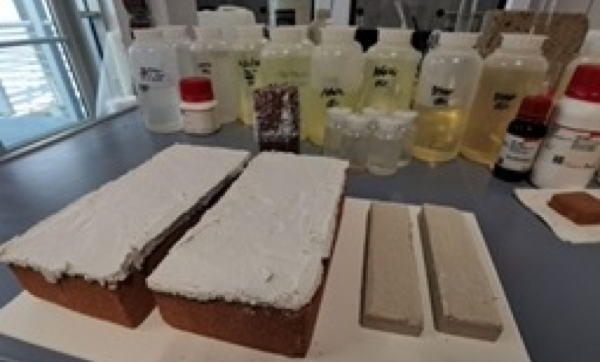
Development of new plasters for heritage conservation
The PhD project, which is in collaboration with Mapei S.p.A., aims at developing new mortars and plasters for the restoration and conservation of historical buildings. Monumental buildings and archaeological areas are characterised by masonry consisting of structural elements (bricks, stones) bonded with mortars and very often covered with plasters. New plasters and mortars are designed using different additives and salt inhibitors to increase durability in coastal environments.
The project also takes sustainability issues into consideration, in terms of compatibility with the present elements, the environment and the effectiveness and durability of the interventions. The sustainability of the new products will also be defined through LCA analysis of the formulations.
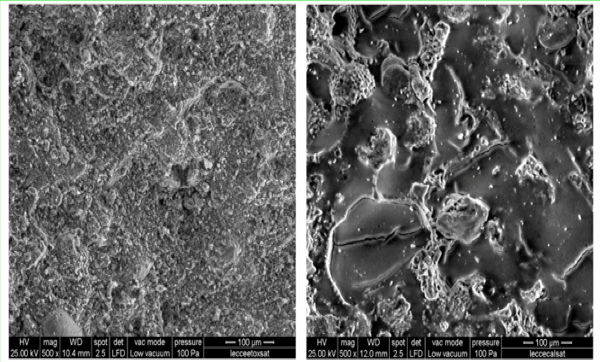
Calcium ethoxide Ca(OEt)2 as a new solution for the consolidation of carbonate substrates
In collaboration with Padua's CNR-ICMATE, the reactivity and kinetics of the carbonation process of calcium ethoxide solutions were studied. The solutions produced are applied and evaluated for the consolidation of carbonate substrates.
Zuena, Martina; Tomasin, Patrizia; Costa, Dória; Delgado-Rodrigues, José; Zendri, Elisabetta Study of Calcium Ethoxide as a New Product for Conservation of Historical Limestone in COATINGS, vol. 8, pages 103 (ISSN 2079-6412)
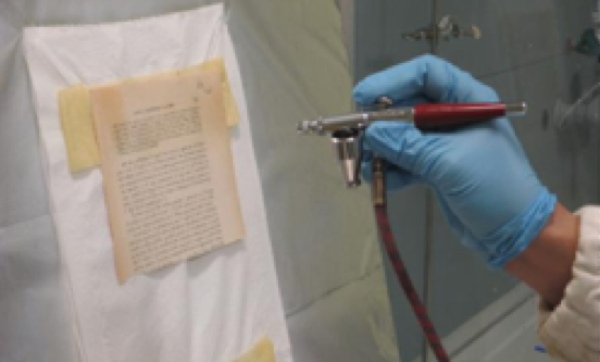
Formulation and evaluation of protective agents for textiles and papers
In collaboration with the Smart Materials department of the Italian Institute of Technology in Genoa, water-repellent coatings additivated with nanoparticles were formulated for the protection of cellulose substrates (paper and textiles). The planning of the work by means of factorial experimental design, the characterisation by means of chemical-physical analysis and the analysis of the data obtained by means of statistical methods (ANOVA, normality tests) made it possible to assess the efficacy and compatibility of the products tested on historical and recently produced supports.
Mazzon, Giulia; Zanocco, Irene; Zahid, Muhammad; Bayer, Ilker; Athanassiou, Athanassia; Balliana, Eleonora; Falchi, Laura; Zendri, Elisabetta Nanostructured coatings for the protection of textiles and paper in GE-CONSERVACIÓN, vol. 11, pages 180-188 (ISSN 1989-8568)
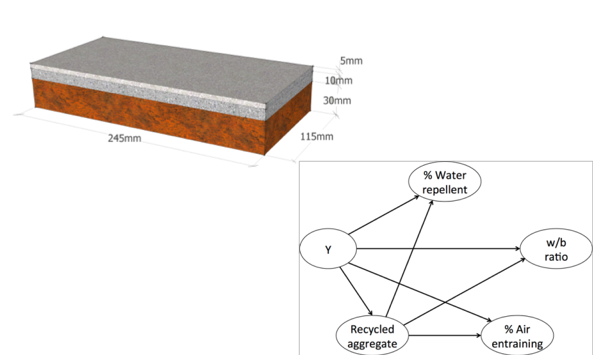
Optimisation of restoration plaster formulation by evolutionary experimental design
Natural hydraulic lime mortar formulations optimised for the containment of capillary rise processes were produced using evolutionary experimental design statistical methods with Bayesian network models.
The influence of recycled aggregates, bulk water repellents and aerating agents on the performance of formulations exposed to capillary rise of saline solutions was evaluated by assessing the degradation produced (detachment, disintegration, exfoliation, efflorescence).
The experimental design has allowed for a consistent reduction (to 1/3) of the physically produced and tested specimens, with a significant cost and space advantage, and provides reliable information on all possible formulations (even those not physically produced).
L.Falchi; D.Slanzi; L.Speri; I.Poli; E.Zendri Optimization of sustainable, NaCl-resistant and water-repellent renders through evolutionary experimental design in CONSTRUCTION AND BUILDING MATERIALS, vol. 147, pages 876-889 (ISSN 0950-0618)
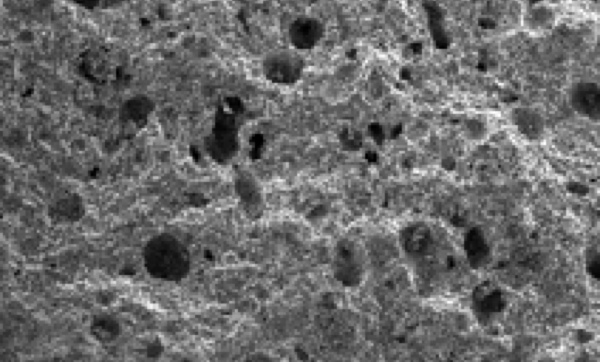
Study of bulk water-repellent mortars for the protection of historic masonry
The effect of bulk hydrophobising additives in natural hydraulic lime, cement and lime-pozzolan mortars on the hydration kinetics and chemical-physical properties of fresh and hardened mortars was studied, as well as on the mechanical and water behaviour (capillary rise and rain).
The data was also analysed by means of statistical processing techniques (PCA and linear and non-linear modelling) for a multi-parametric, integrated and easily visualised evaluation of the behaviour of the mortars produced even after accelerated ageing (thermal shock and salt cycles).
L. Falchi; C. Varin; G. Toscano; E. Zendri Statistical analysis of the physical properties and durability of water-repellent mortars made with limestone cement, natural hydraulic lime and pozzolana-lime in CONSTRUCTION AND BUILDING MATERIALS, vol. 68, pages 260-270 (ISSN 0950-0618)
Equipment
The laboratory uses state-of-the-art equipment for its research for the study and non-invasive analysis of materials.
Available equipment
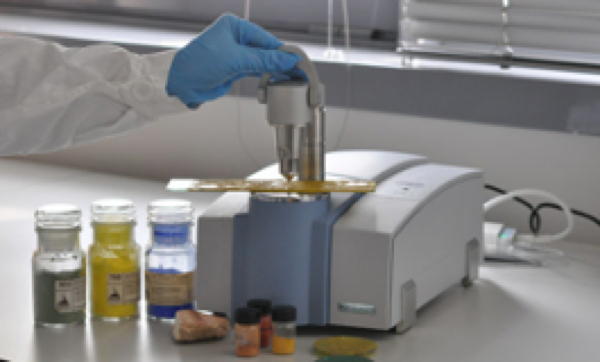
CSA "conservation of cultural heritage" equipment
The group can access the University equipment for the conservation of cultural heritage managed by the CSA and possesses the specialised skills to use, process and interpret data also on behalf of third parties of:
- Specim IQ and Specim spectral cameras VNIR- SWIR for spectroscopic imaging analysis in the VIS-NIR to SWIR spectral range
- FieldSpec 4 SR -Malvern PanAnalitical portable spectroradiometer in the spectral range 350 - 2500 nm for real-time reflectance, radiance or irradiance measurements Portable FT-IR-ATR spectrometer Alpha II Bruker
- BRAVO Bruker Hand-held Raman Spectrometer
- Thermo Scientific DXRTM3 Dispersive Raman Microscope
- CRONO Bruker X-ray fluorescence spectrometer for macro-area diagnostic investigations
- QSun Xe-3 Xenon Test Chamber
- Gas chromatography system with single quadrupole mass spectrometer (gc-ms) with pyrolyser
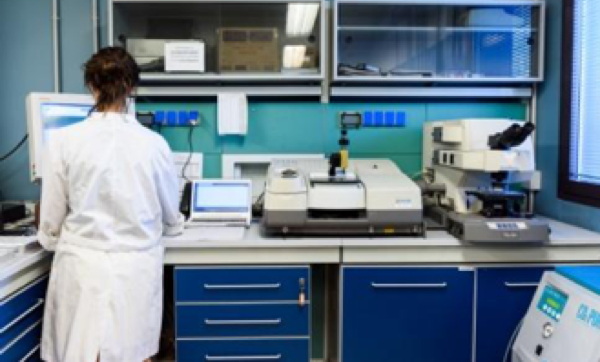
Benchtop FT-IR-ATR spectroscopy
Acquisition of mid-infrared transmission or reflection spectra using diamond crystal ATR units for functional group analysis.
- Range 4000-400 cm-1
- Resolution 4 or 2 cm-1
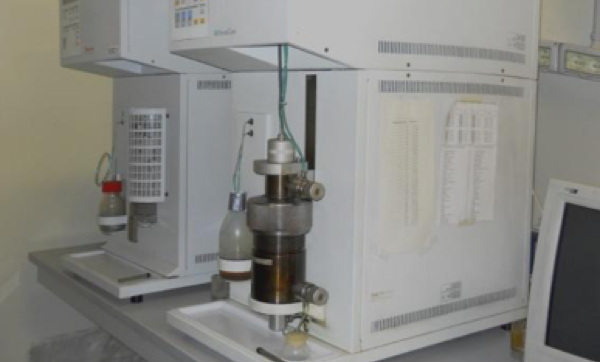
Mercury intrusion porosimeter
- Two-unit Pascal 140 and Pascal 240 for macro- and micropores and powders
- Diameter porosity in the 116 -3.8 µm (P140) and 15 -0.0074 µm (P240) ranges
- Particle diameters 330-15 µm (P140) and 40-0.015 µm (P240)
- Capacitive mercury intrusion detection system
- Pressure: 0.01 KPa- 400KPa and 0.1-200MPa
The mercury intrusion porosimeter enables the evaluation of the total open porosity and open pore distribution of non-compressible porous materials (ceramics, mortars, wood, clays, polymers). It offers the possibility of measuring the surface area and radius of granular materials and powders.
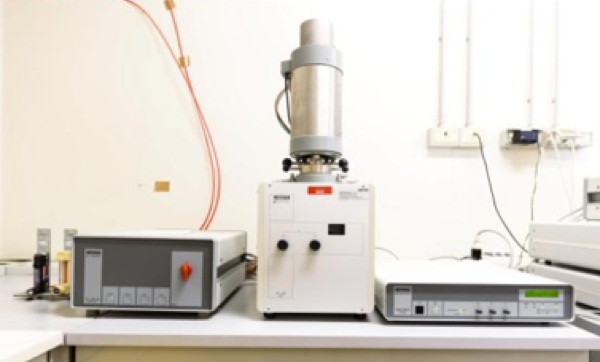
Thermal analyses
Thermogravimetry with Differential Scanning Calorimetry (TG-DSC)
- Instrument allowing for the simultaneous acquisition of the thermogravimetric and calorimetric curve
- Temperature range 25°C -1400°C
- Analysis possible in inert (N2) and oxidising (Air/ N2) atmospheres, possibility of agreement for other atmospheres
Information about the thermal behaviour of samples allows transformations such as glass transition, melting, dehydration, decarbonisation, oxidation, crystalline phase transitions (polymorphs), thermal degradation to be studied.
Dynamic Mechanical Analysis (DMA)
- Temperature range: -170°C a 600°C
- Frequency range: 0.01 a 100 Hz
- Force range: 24 N (12 N static and 12 N dinamic)
Dynamic Mechanical Analysis (DMA) records temperature-dependent visco-elastic properties and determines elastic modulus and damping values. It makes it possible to observe elastic and plastic behaviour, ductile or brittle fractures, polymer transitions.
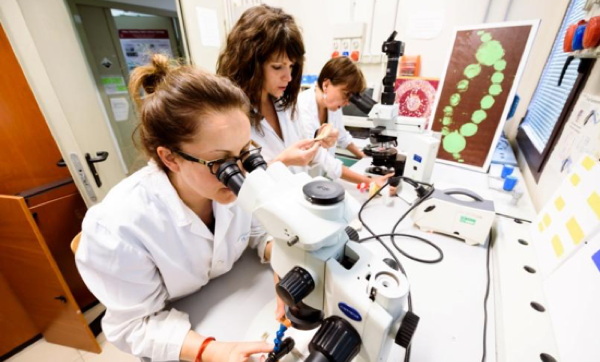
Optical microscopy
- Zeiss Stemi 508 trinocular stereo microscope, up to 100X magnification with apochromatic lens
- Olympus SZX16 binocular stereo microscope, magnifications up to 115X
- Olympus BX41 transmission microscope; magnifications up to 400X
- Dino-Lite hand-held digital microscopes in visible light and UV (400nm), magnifications 20-50X, 200X
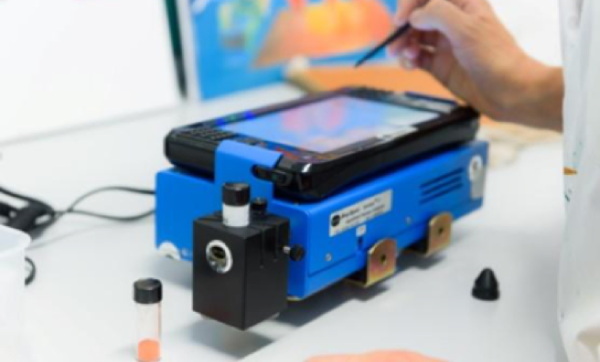
Xantus-1TM Portable Raman Spectrometer
- Range 500-1800 cm-1
- Resolution 10-12 cm-1
- Laser at 785.59 n, 100-500 mW
Portable Raman spectrometer for non-invasive analysis of materials with Raman scattering in the range 500-1800 cm-1.
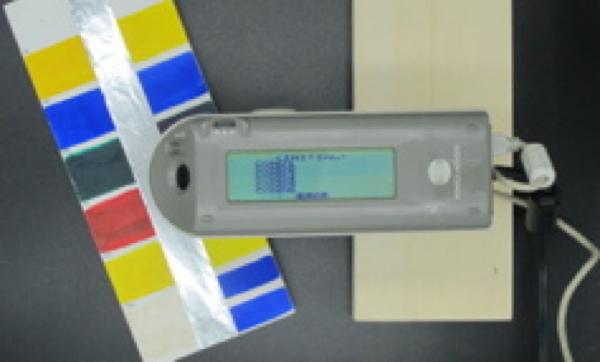
UV-Vis Konica-Minolta spectrophotometer
- Range 360-740 nm with 400 nm UV filter
- Illuminant D65 (colour temperature 6504° K)
- Standard observer at 10°
- Specular component included (SCI) or excluded (SCE)
Colour analysis with recording of colorimetric spectra in the range 360-740 nm and acquisition of CIE L*a*b* colorimetric parameters.
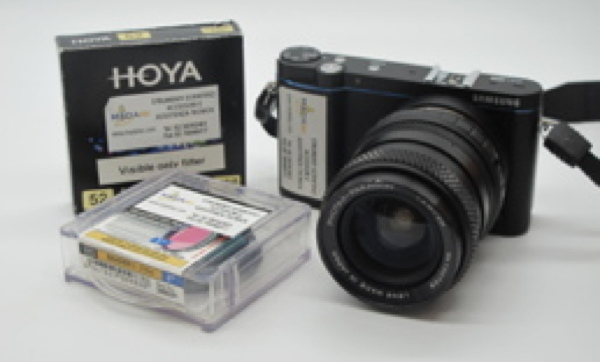
Photographic imaging, infrared reflectography and UV fluorescence
- NX500 Multispectral Digital camera BSI 28Mpxl Body s/n 8JFHCN8G300002F
- Camera body 20.3 MP APS-C CMOS sensor digital camera equipped with interchangeable lenses
- 32 mm lens
- HOYA Visible filter, 60 nm HBW/320-380 nm filter; infrared and ultraviolet filters
Visible light, infrared, ultraviolet and fluorescence-induced photography for analysing the surface of works in different spectral ranges.
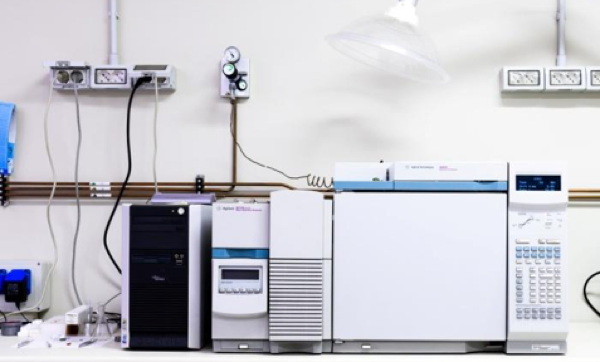
Gas chromatography combined with mass spectrometry (GC-MS)
- Agilent 6890N chromatography gas consisting of injection system, oven, column
- Agilent 5975 electronic impact (EI) mass spectrometer
- equipment of several chromatography columns for separation of polar and apolar compounds
Gas chromatography coupled with mass spectrometry is used for the analysis of complex mixtures of organic compounds, such as oils, protein binders, saccharide compounds.
Research Projects
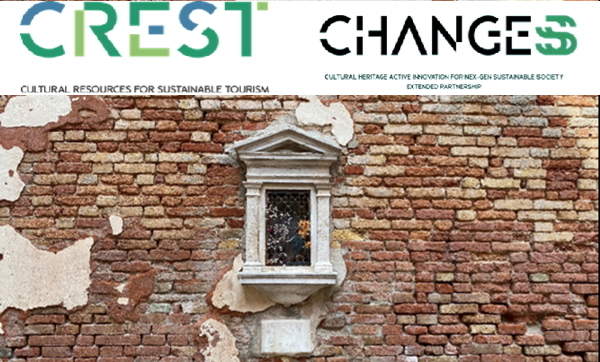
CREST (CHANGES) - Cultural Resources for Sustainable Tourism
Research line Conscious participation, cultural heritage and community monitoring
(2023-2025)
The CHANGES project - Cultural Heritage Active Innovation for Sustainable Society - is configured as a partnership made up of 11 Universities, 4 Research Institutions, 3 Schools of advanced studies, 6 Companies, 1 Center of Excellence and is divided into 9 Spokes. Spoke 9, called CREST (Cultural Resources for Sustainable Tourism) sees the Ca' Foscari University of Venice as project leader.
As part of the CREST project, the activity carried out by our researchers intends to evaluate the effects of climate change on the "erratic" Venetian heritage, also through the active involvement of citizens. A monitoring methodology is being developed based on the detection of significant morphological parameters of the state of conservation and transformations of this heritage - consisting of coats of arms, paterae, aedicules, etc. distributed in the historic center of Venice also thanks to the collaboration with the BC Protection Unit of the Civil Protection of the Municipality of Venice, which has been registering the city's erratic heritage for some time.
The impacts of climate change and tourist pressure on this widespread heritage will be recorded in special maps which will allow us to verify the extent in relation to exposure and identify the city areas most subjected to such stress.
Funding: European Union NextGenerationEU
Website: https://pric.unive.it/progetti/spoke-9-changes/changes
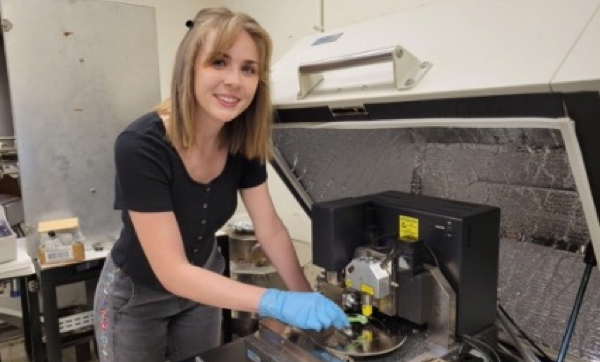
Amorphous Alumina ALD coatings for protecting limestone
2023-2025
The research focuses on using atomic layer deposition (ALD), a technique popular in the semiconductor industry for its application of ultrathin and conformal films, as a means of applying protective coatings to cultural heritage objects. Recently, supported by the Fulbright program, the work has centered on using amorphous alumina ALD coatings for protecting limestone against acid attack.
Gillian Boyce, Suveena Sreenilayam, Ethan Hyde, Ray Phaneuf, Eleonora Balliana, Elisabetta Zendri
Funding: U.S. - Italy Fulbright Commission in collaboration with the University of Maryland
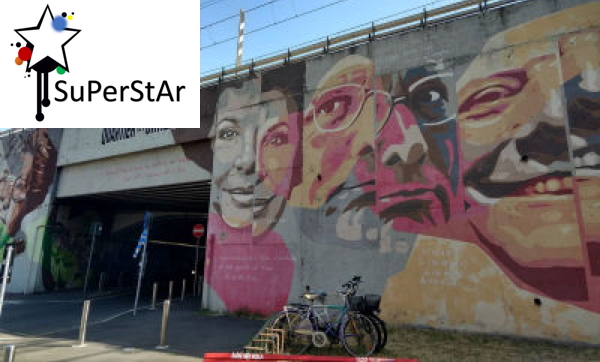
PRIN-2020 SUPERSTAR Sustainable Preservation Strategies for Street Art
2021-2024
The PRIN-2020 SUPERSTAR project aims at defining innovative guidelines for the development of a conservation strategy for street art, with a view to safeguarding its powerful social and cultural message in the urban context. A combination of non-invasive and micro-invasive techniques will shed light on the chemical-physical properties and vulnerability aspects of modern pictorial constituent materials. The study will be conducted in the laboratory on reference materials and with research conducted on relevant case studies located in different urban environmental contexts. The focus is on the materials used by the artists, the interaction with the environment and its risks anthropogenic stresses.
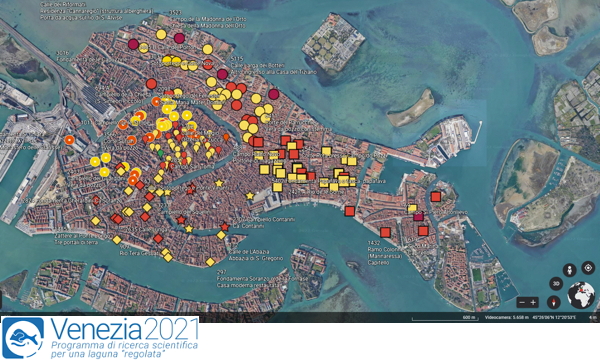
VENEZIA 2021 Scientific research programme for a "regulated" lagoon
Linea 5.3. Climate change adaptation plan and implementation of intervention strategies to safeguard the architectural heritage (2019-2022)
The Venezia2021 Research Programme involves about 200 researchers from all CORILA member bodies (Ca' Foscari, IUAV and Padua Universities, and the national research bodies CNR and OGS) and is divided into five themes and fifteen Lines, each with specific objectives. Within the framework of the IUAV-UNIVE interdisciplinary group that deals with the construction of specific intervention strategies for the conservation of cultural heritage, our researchers have developed activities aimed at characterising the lagoon landscape, defining and constructing the cognitive framework of the conditions of conservation and vulnerability of lagoon architecture both through the examination of indirect sources and through case studies. At the same time, through in situ and laboratory experimentation, it has developed non-invasive monitoring procedures for studying the dynamics of capillary rising in masonry. Finally, through the examination of archive images and field monitoring, it has arrived at the definition of monitoring and control systems for Venetian buildings.
Website: http://venezia2021.corila.it/home/
* Map of changes in the level reached by rising damp in Venetian masonry over the 2000-2019 period through visual observation. The colour scale indicates respectively: red significant rise in level; yellow non-significant variation; green significant fall in level. A significant change is identified in the height of at least one course of bricks.
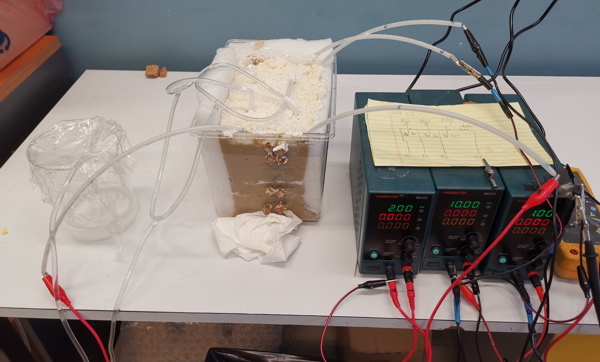
THOR-Electro-kinetic methods for the desalination of porous materials
The project studies innovative systems for the preservation of Venetian monuments severely affected by saltiness. The project, which is funded by Leonardo, SNAM and Intesa Sanpaolo, is proposed in collaboration with the Superintendency of Venice, also for interventions on pavement stones in numerous Venetian churches that are often subject to interaction with seawater and degradation caused by saltiness.
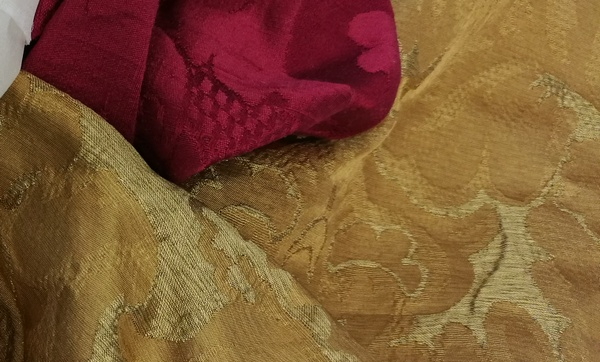
ISMEE Impacts of sanitisation in museums and church environments to prevent Covid-19
2021-2022
SPECIAL SUPPLEMENTARY FUND FOR RESEARCH (FISR) - MUR
In this pandemic time, we have heard repeatedly about "sanitisation", "disinfection" and the like, which are used to make the environments we frequent safer. But what is the impact of these substances in particularly delicate environments such as museums, historical residences and places of worship embellished with silks and materials which need to be treated with special care? Our research team led by Elisabetta Zendri, Eleonora Balliana and Fabio Aricò investigated this particular aspect with a study on the possible impact of the formulation suggested by the Italian Ministry of Culture (water 20%, alcohol 75%, benzalkonium chloride 5%) on silk fabrics, given their widespread use as upholstery in many historic residences and places of worship. The experimental results obtained to date do not show any significant chemical transformations of the silk fibre resulting from accidental contact between the sanitising solution and the fabric, but significant colour changes were detected in correspondence of the areas of contact between the solution and the silk. It has also been observed that benzalkonium chloride, a bactericide present in the sanitising solution, can deposit on the fibres of the fabric and modify their structure, facilitating the condensation of water on the fibres. In this case, one cannot exclude the activation of degradation processes linked to the microclimatic storage conditions of the artefact.
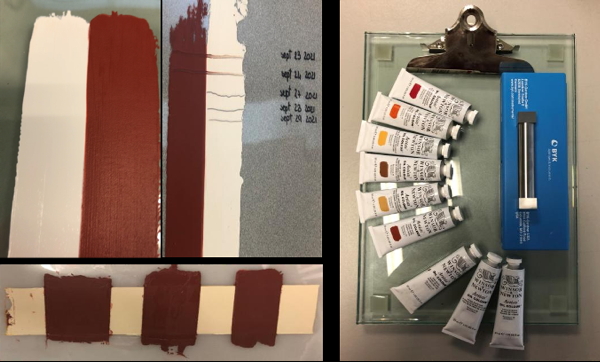
MIMO - Metal Ion Migration mechanisms in Oil paints drying and degradation
Programa Estatal De Fomento De La Investigación Científica Y Técnica De Excelencia - Subprograma Estatal De Generación De Conocimiento – Ministerio De Economía Y Competitividad, Spain (2020-2023)
During the MIMO Project, which is coordinated by Prof. Laura Fuster-Lopez of the Universitat Politecnica de Valencia, the aim is to study the migration of metal ions within paint layers and to identify the chemical, mechanical and visual effects that influence the formation and durability of oil paints.
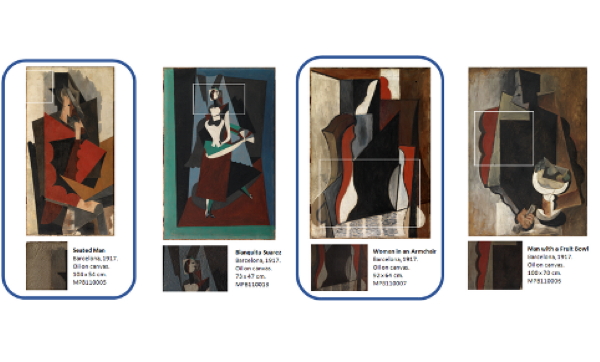
PROMESA - Study of the mechanical and dimensional properties of commercial paint films
ProMeSA- of the mechanical and dimensional properties of commercially manufactured paint films and their influence in the physical and chemical degradation of modern and contemporary paintings (2016-2019)
The project, which was coordinated by Prof. Laura Fuster-Lopez, Professor of Conservation at the Universitat Politècnica de València, focused on the combined study of the chemical composition and physical-mechanical degradation mechanisms that occur in modern and contemporary works of art in order to adapt preventive conservation measures for paintings.
The research benefited from the collaboration of the Picasso Museum in Barcelona, thanks to which it was possible to study several masterpieces by Pablo Picasso.
- L. Fuster-López, F. C. Izzo, C. K. Andersen, A. Murray, A. Vila, M. Picollo, L. Stefani, R. Jiménez & E. Aguado-Guardiola Picasso’s 1917 paint materials and their influence on the condition of four paintings in SN APPLIED SCIENCES, vol. 2, 2020
- A. Vila, A. Murray, C. K. Andersen, F. C. Izzo, L. Fuster-López, E. Aguado-Guardiola, R. Jiménez-Garnica, A. Scharff Picasso 1917: An Insight into the Effects of Ground and Canvas in the Failure Mechanisms in Four Artworks, Conservation of Modern Oil Paintings, Springer, Cham, pages 245-253, 2020
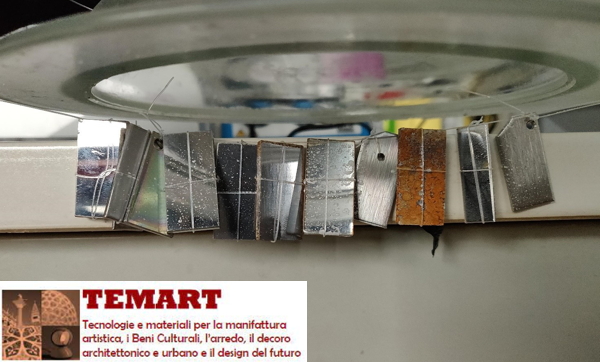
TEMART: Technologies and materials for artistic manufacturing, cultural heritage, furniture, architectural and urban decoration and the design of the future
POR FESR 2017-2020
The project aims at enhancing technical and scientific knowledge and the ability to develop new combinations of manufacturing technologies and materials that meet the needs and capacity for innovation in the domains of artistic craftsmanship, restoration of cultural heritage, furniture and design.
Study, development and validation of innovative technological applications capable of prototyping and producing components and products of artistic and design value.
Website: www.unive.it/pag/12642
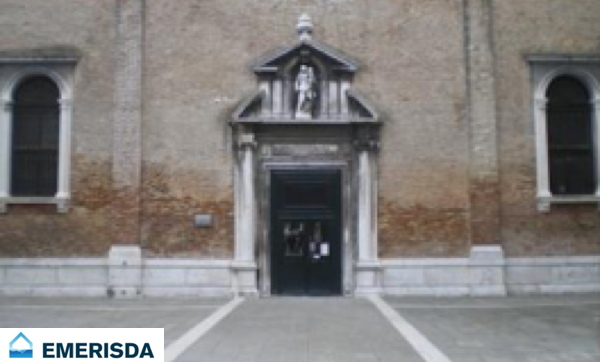
Emerisda: Effectiveness of Methods against Rising Damp: European Practice and Perspectives
JPI Joint Programming Initiative - Joint Heritage European Programme 2014-2017
A study of the effectiveness of methods against rising damp in buildings also in relation to climate change. Development of common protocols and tools for the conscious choice of masonry renovation technologies. The project saw the collaboration of BBRI Belgium, CNR-ISAC Bologna, TU-Delft Delft University of Technology, Cultural Heritage Agency of Belgium, Ca' Foscari University Venice, Restauri Speciali S.R.L., Diasen.Our group focused on:
- the analysis of capillary rising in Venetian masonry, with the production of a database analysed with statistical tools to assess the dynamics prevailing in the lagoon city
- the monitoring of a polarised bar system in a section of masonry in St Mark's Basilica.
Website: https://www.emerisda.eu/
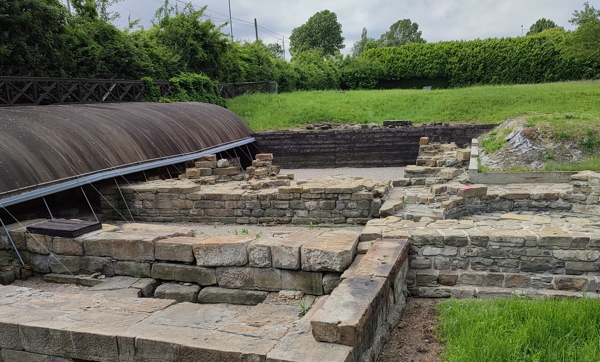
APPRODI - PLUS
2022
INTERREG V-B Adriatic-Ionian ADRION Programme 2014-2020 Restricted fourth call for proposals - Priority Axes 1, 2 and 3
The overall objective of the APPRODI PLUS project is to improve and extend the impact of the original APPRODI project. In particular, will enhance three aspects:
the definition of an interactive map of the historic ports of the Adriatic Sea. The map will be interactive, providing points of interest and hypertexts that make the tool more attractive to the user and easy to use.
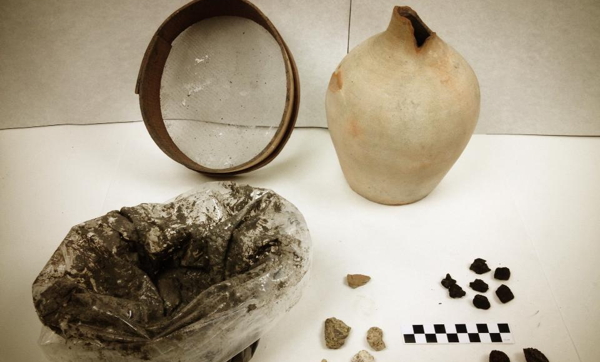
APPRODI - From Ancient Maritime Routes to eco-touristic destinations
2018
Approdi aims to a prosperous and integrated Adriatic and Ionian Region. Its eco-touristic strategy seeks to unlock the potentials of Europe’s seas and coastal area. The project will enhance new and ecological forms of tourism based on old commercial maritime
routes and ancient ports’ reemergences. The key/research sites are Venice (Torcello Early Middle Age Harbor Area), Zadar, Ortona, Zadar, Dubrovnik, Durres, and Corfù.
The Pilot Action in Venice-Torcello aims to test the feasibility of a zero-impact innovative archaeological park.
Using the exciting moment of the discover given by the archaeological excavation opened daily to the public, Venice has the opportunity to narrate in a very distinctive way its origins and its maritime history.
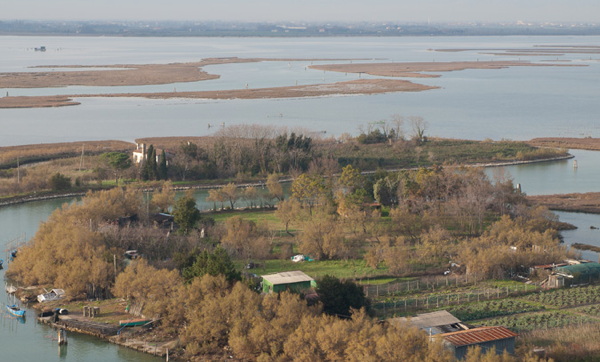
Torcello Abitata
2015-2018
The idea underlying the Torcello Abitata project came about following the positive experience of the excavations carried out as part of the Shared Culture European Project, the result of a fruitful collaboration between the Veneto Region and Ca' Foscari University of Venice. Starting from the results achieved in the recent excavation campaign, the project proposes an absolutely innovative way of scientifically approaching archaeological activity, associating an anthropological-ecological vision, the on-site archaeometric study of the finds, the development of sustainable methods for the recovery and conservation of artefacts, and the sharing of research and excavation phases by opening the site to the public during the excavation phases.
Website: www.unive.it/pag/31047
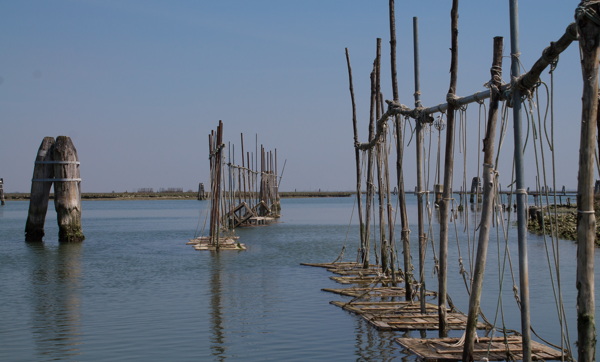
VoicesofVenice
2013-2018
VoicesOfVenice develops a new concept of archaeology, integrating the current debate on ecological degradation and the anthropological theory of materiality to re-evaluate the process of Europeanisation through the formation of new settlements in the Venetian lagoon in late antiquity. Through this project, direct access is given to original data from archaeological excavations on the island of Torcello, including archaeological remains, environmental samples, and stratigraphic sequences. By studying original topographical features, stratigraphic groups rich in artefacts, and characterising and preserving artefacts in ceramics, glass, metals and bone, our research group is working to reconstruct the inhabited spaces on the island, in order to investigate the critical transition from the Late Antiquity to the Early Middle Ages in a land that straddles the Mediterranean and Central-Northern Europe.
Website: www.unive.it/voicesofvenice
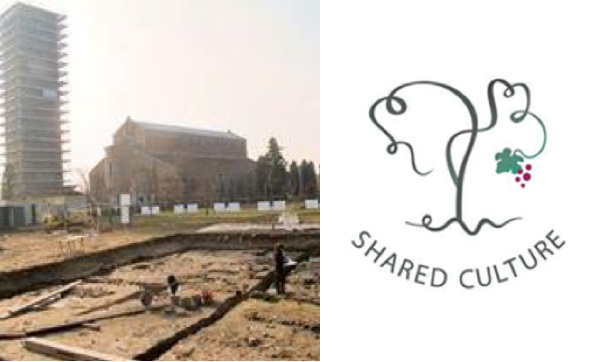
Shared Culture - Torcello
2011-2013
EU Interreg Project Shared Culture, Cross-border Cooperation Italy-Slovenia 2007-2013
Strategic Project for the Knowledge and Use of Shared Cultural Heritage 2007-2013
In agreement with the Municipality of Venice, owner of the investigated areas, and with the concession of the Italian Ministry of Cultural Heritage and Activities, Ca' Foscari University of Venice and the Veneto Region have developed a plan of action aimed at enhancing the cultural heritage of the project area and increasing its recognition by a vast and diversified audience through the restoration, cataloguing and digitisation of artefacts. In particular, our group focused on pilot projects for the excavation and restoration of artefacts at archaeological sites on the island of Torcello (2012), the cataloguing and digitisation of artefacts, the online catalogue of sources and documents, and the training of professionals in the restoration sector.
Website: https://www.regione.veneto.it/web/cultura/sharedculture
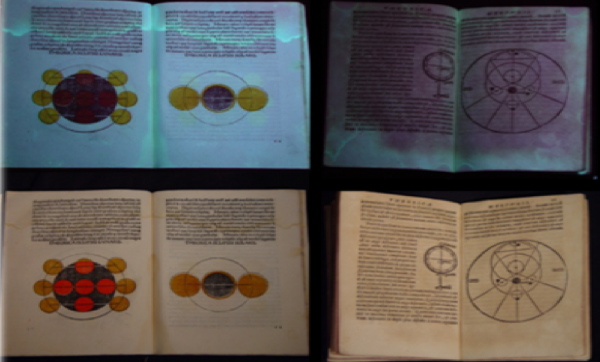
The ARGEIA project: a network for the study of printed books from their origins to the present day
2016-2022
The ARGEIA project, which was initiated thanks to the collaboration between Ca' Foscari University of Venice, EPFL, the Swiss Federal Institute of Technology in Lausanne, and Ateneo Veneto, aims at providing essential support to the knowledge of books as material artefacts, the evaluation of their conservation history and the development of damage prevention projects.
In its initial phase, the project enabled the systematic study of 60 printed books produced in different European areas and in different periods (from the 16th to the 19th century) using non-invasive techniques (multispectral analysis, XRF and FTIR spectrophotometry, spectrocolorimetric analysis) to monitor the state of conservation of the works and for the specific assessment of suitable conservation conditions. The developed procedure will also be extended to contemporary works and smart control and prevention systems will be implemented.
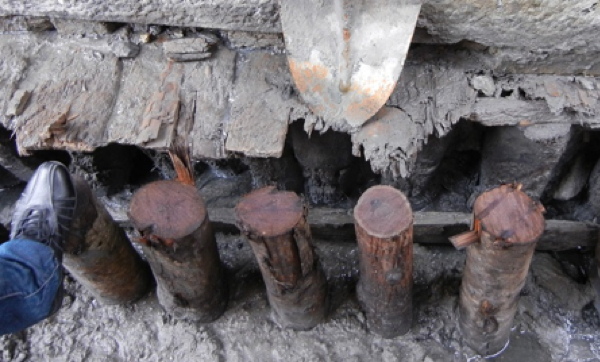
Guidelines for the consolidation of foundations based on timber piles
CORILA Project - Veneto Region 2009-2012
The aim of the project is to study the behaviour of foundation piles of Venetian buildings immersed in mud and to identify possible chemical, physical and biological deterioration processes.
The project, which was conducted with the participation of CORILA, CNR- Ivalsa, Insula spa, Ca' Foscari University of Venice and the University of Padua, and the support of the Superintendency for Architectural and Landscape Heritage of Venice and the Lagoon, showed that despite the fact that wood is sometimes very degraded, the 'system' in which earth and water are also at work can continue to support Venetian marble façades and palazzi. Finally, a survey protocol was developed that can be used systematically by institutions and private individuals for the monitoring and maintenance of city foundations.
Website: http://www.corila.it/?q=node/153
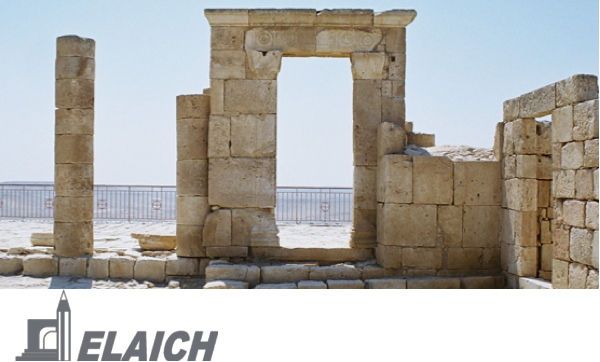
ELAICH: Educational Linkage Approach In Cultural Heritage
Euromed Heritage 4 project 2009-2012
The ELAICH project (Educational Linkage Approach In Cultural Heritage), in collaboration with the Technion- Israel Institute of Technology, the University of Antwerp, the National Technical University of Athens and the University of Malta, increases awareness of the importance of Cultural Heritage and its conservation by particular target groups within the general public , such as youth, with a focus on built heritage. Didactic-experiential activities were organized with courses for the enhancement and study of the materials of cultural heritage for the preparation of an e-learning course. The eLAICH educational toolkit was developed and made accessible to the general public through the eLAICH e-learning platform, using the Learning Management System (LMS), the Content Management System (CMS) and information and communication technologies (ICT).
Last update: 23/04/2024
